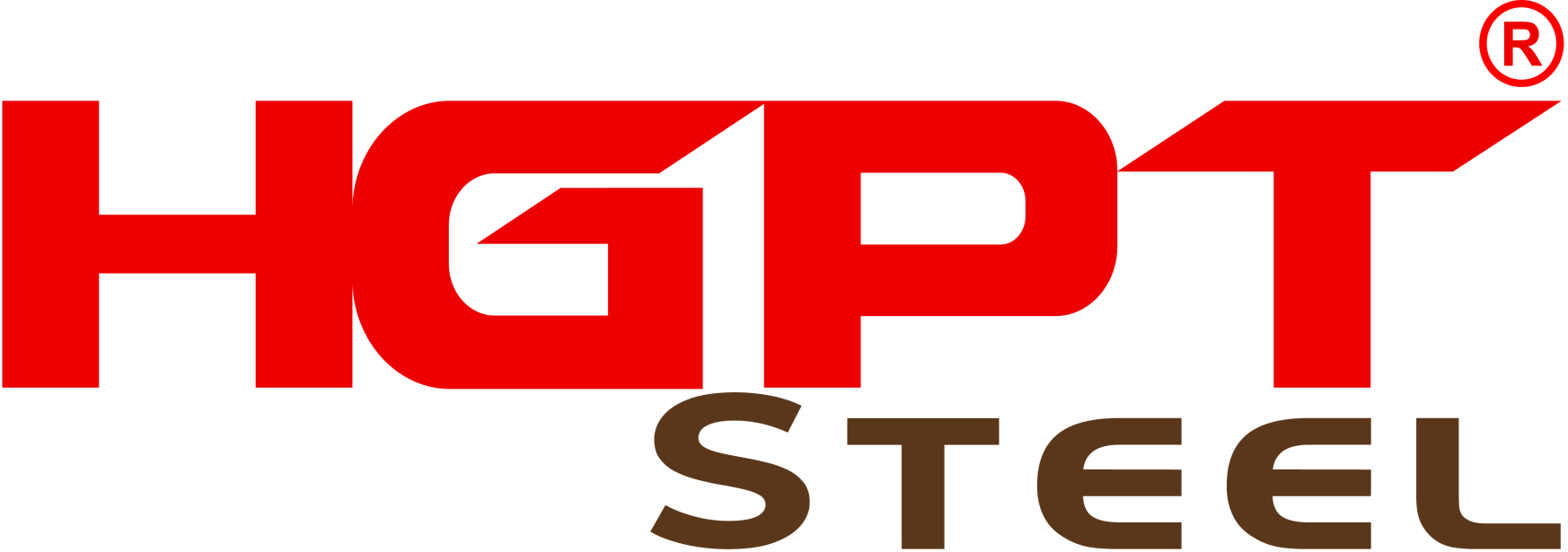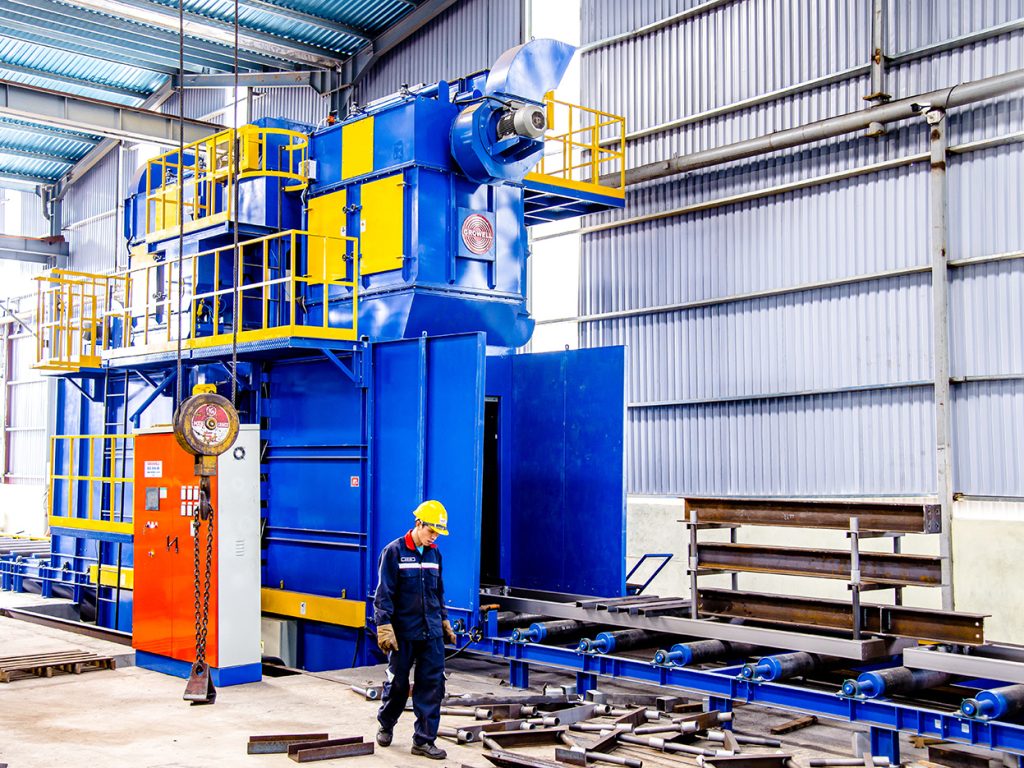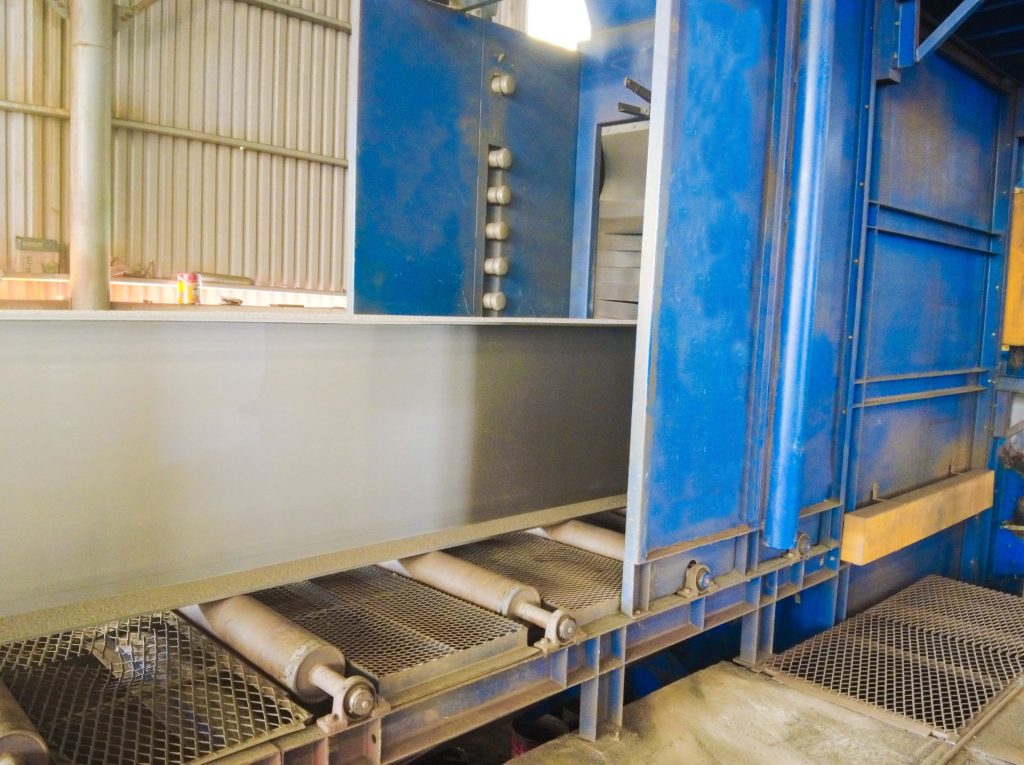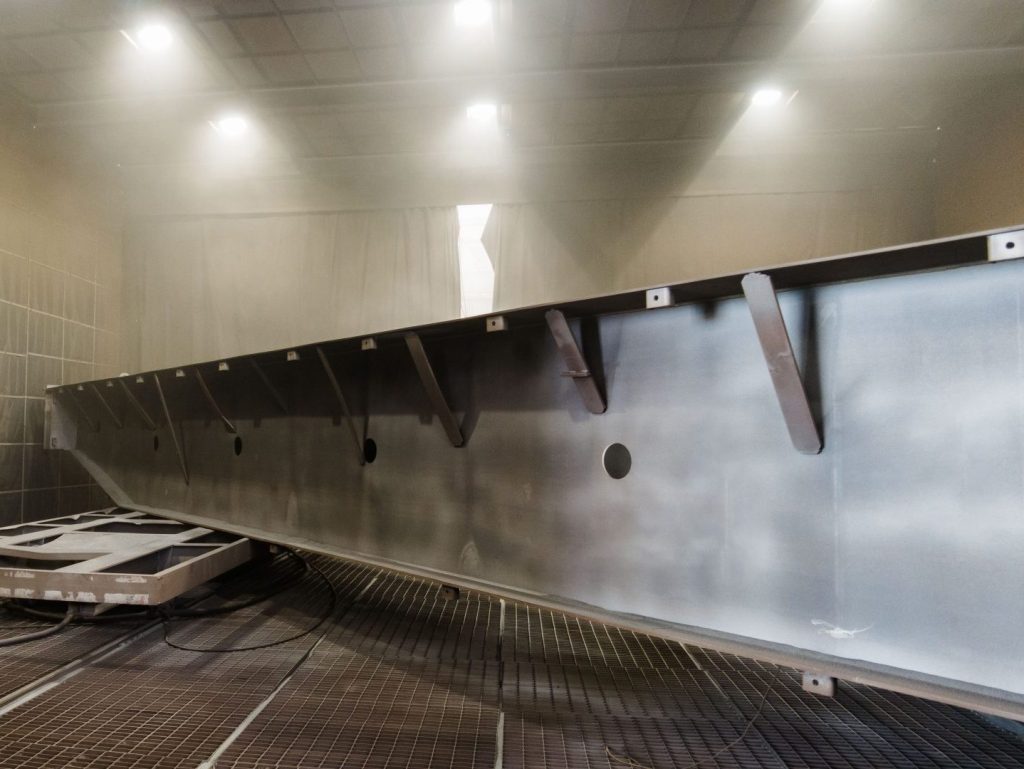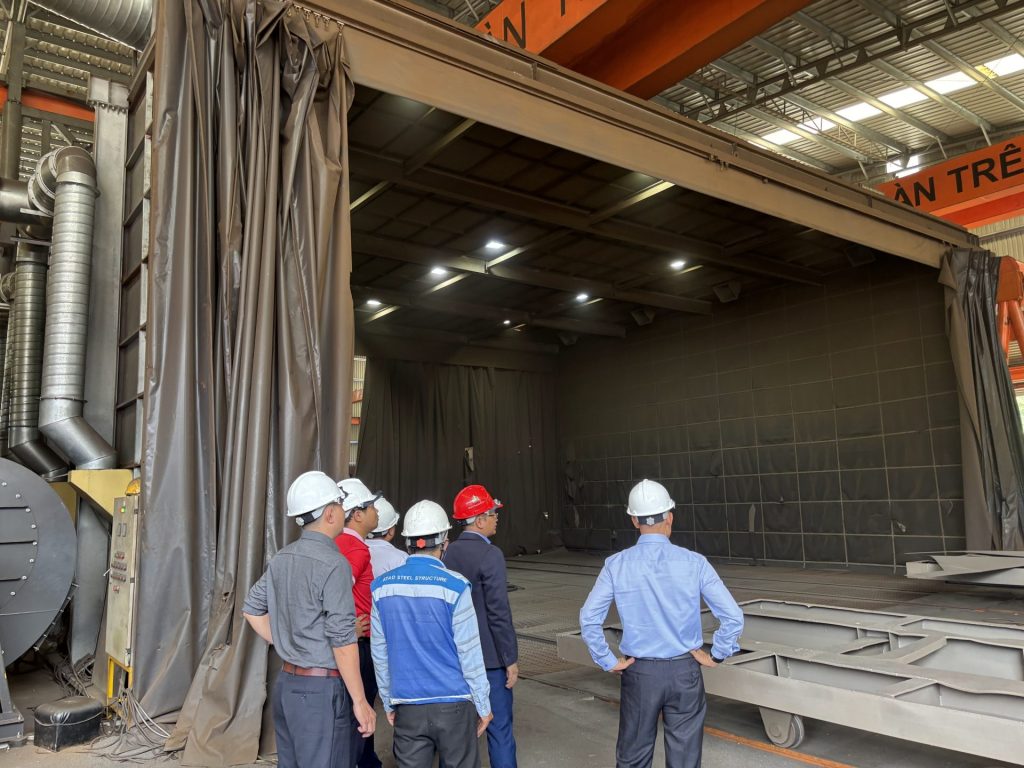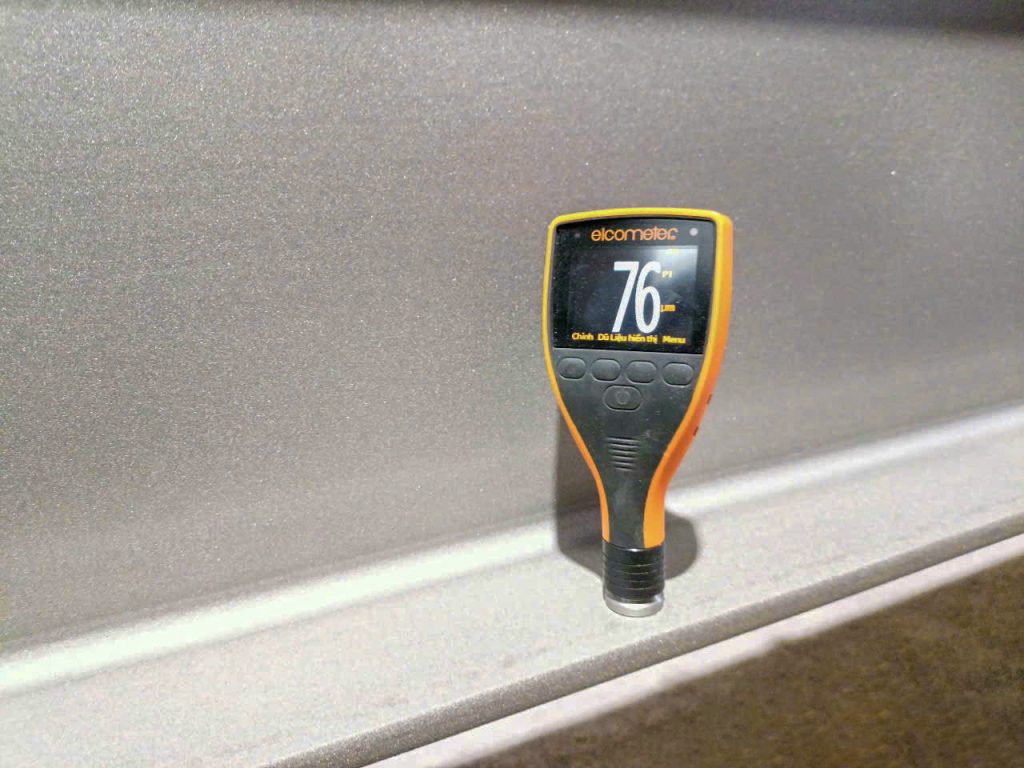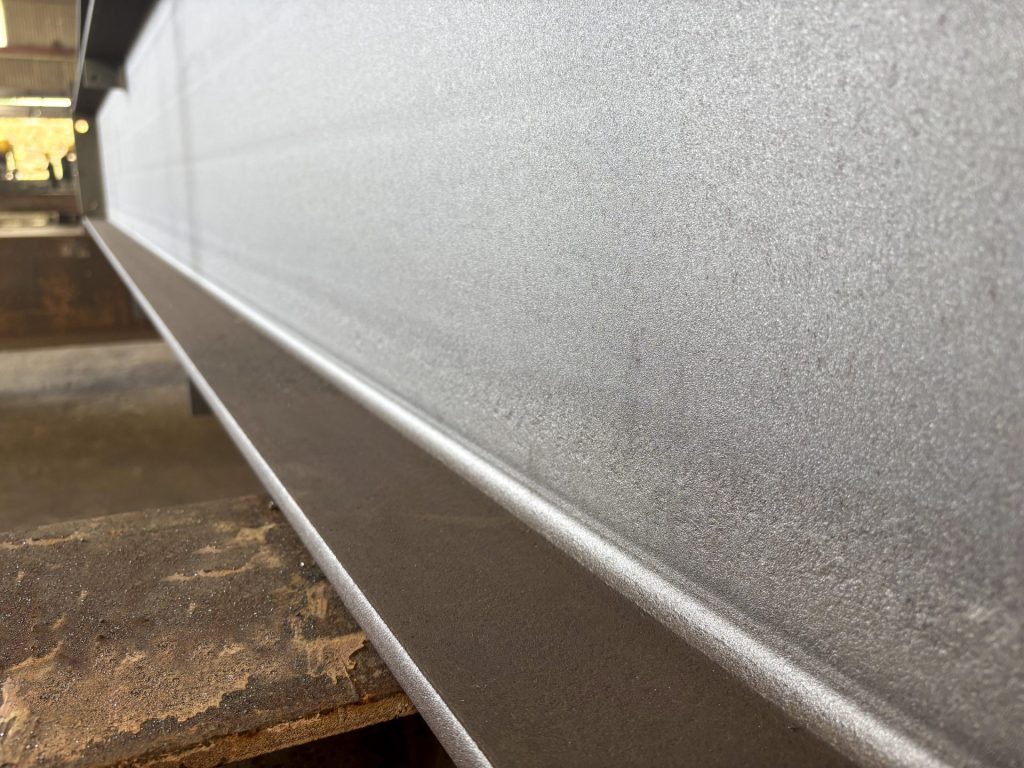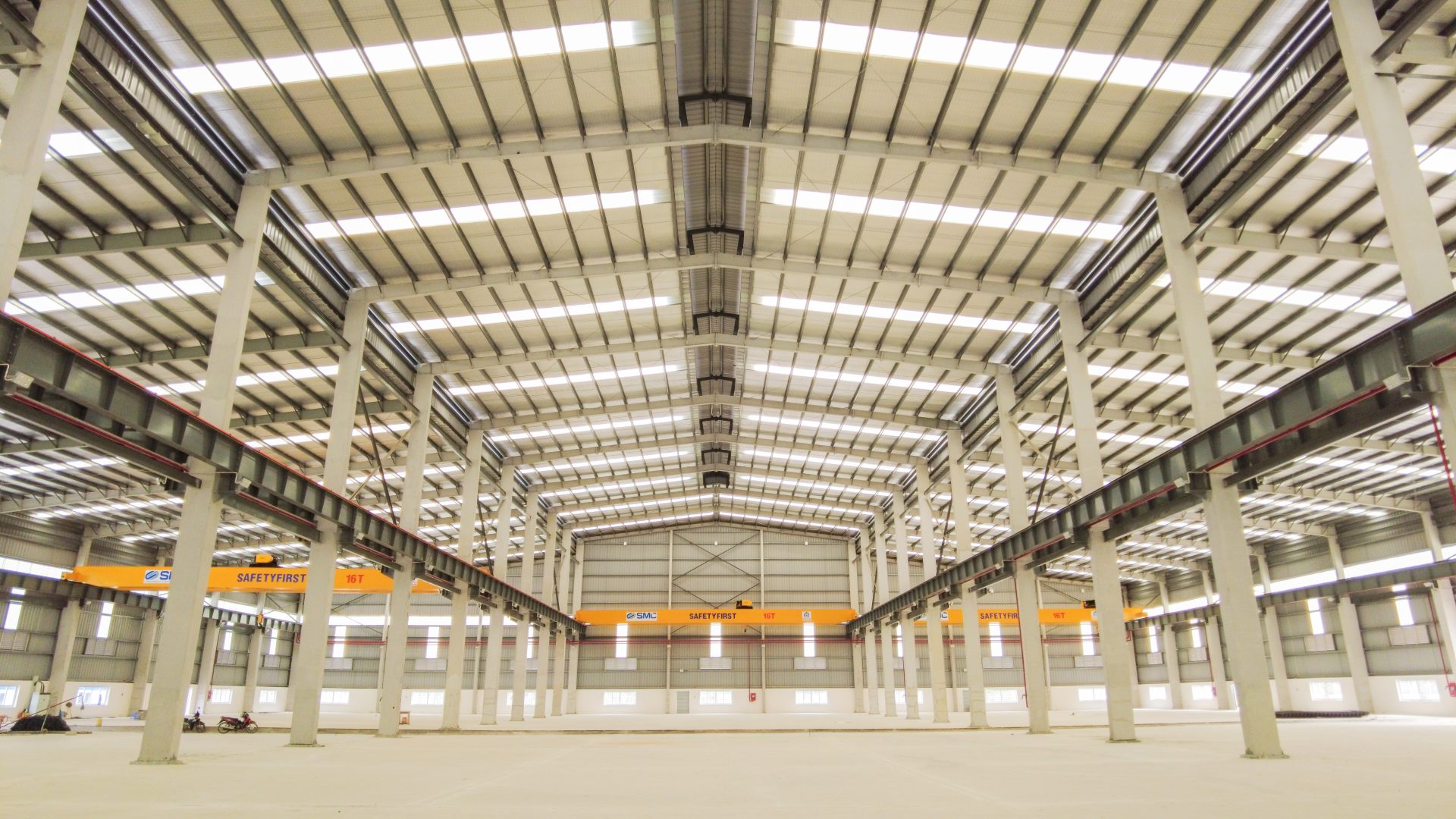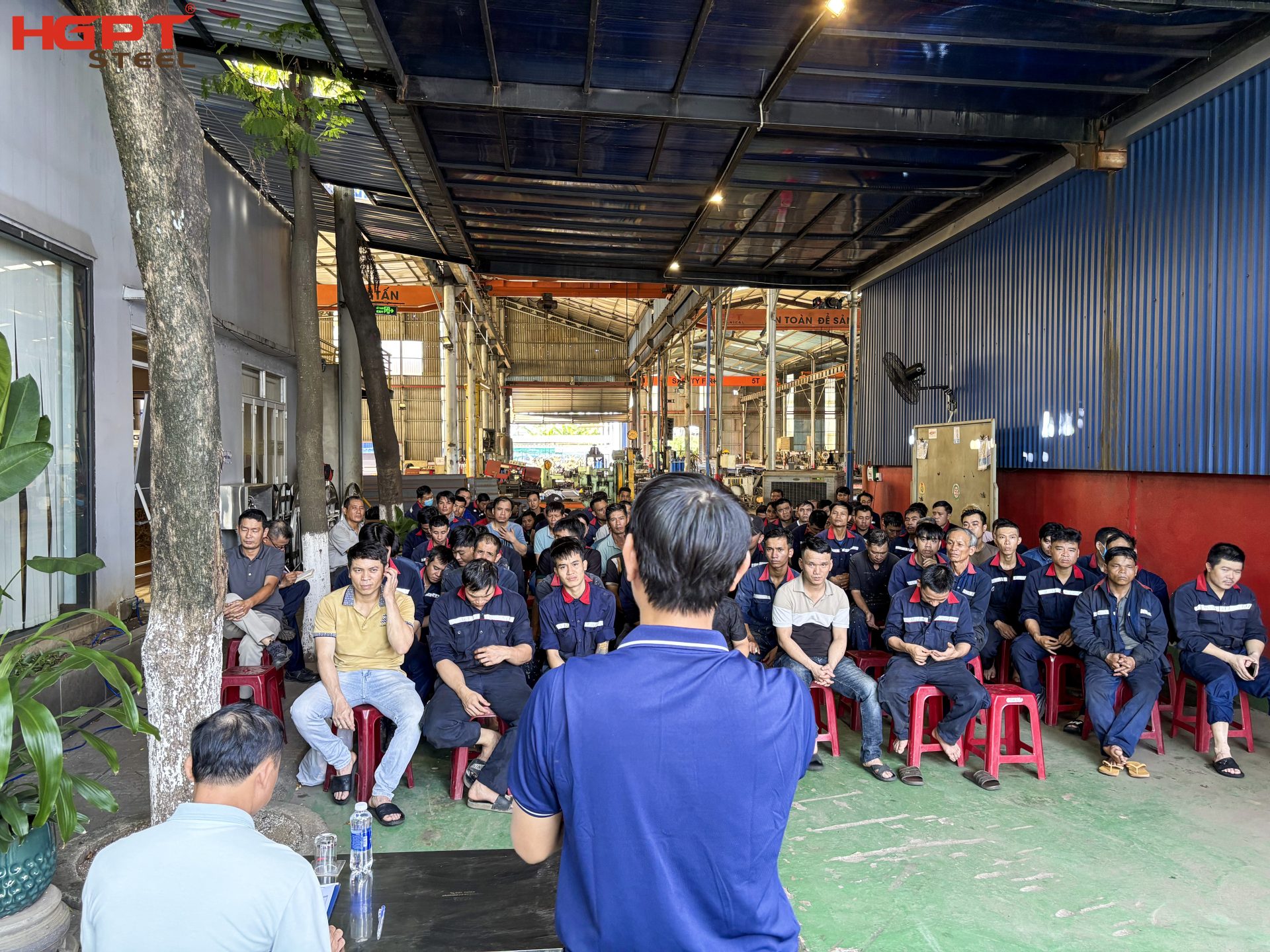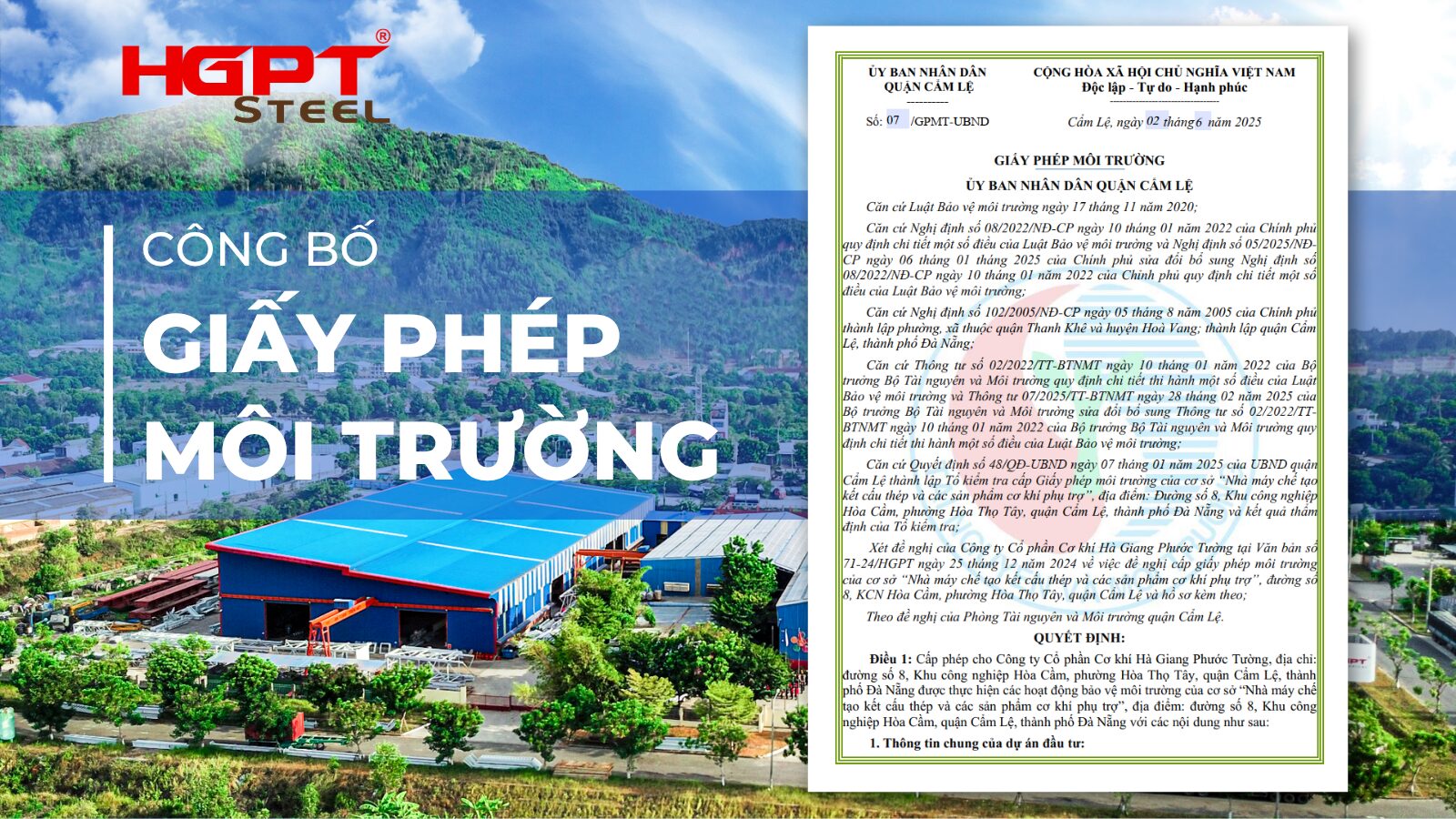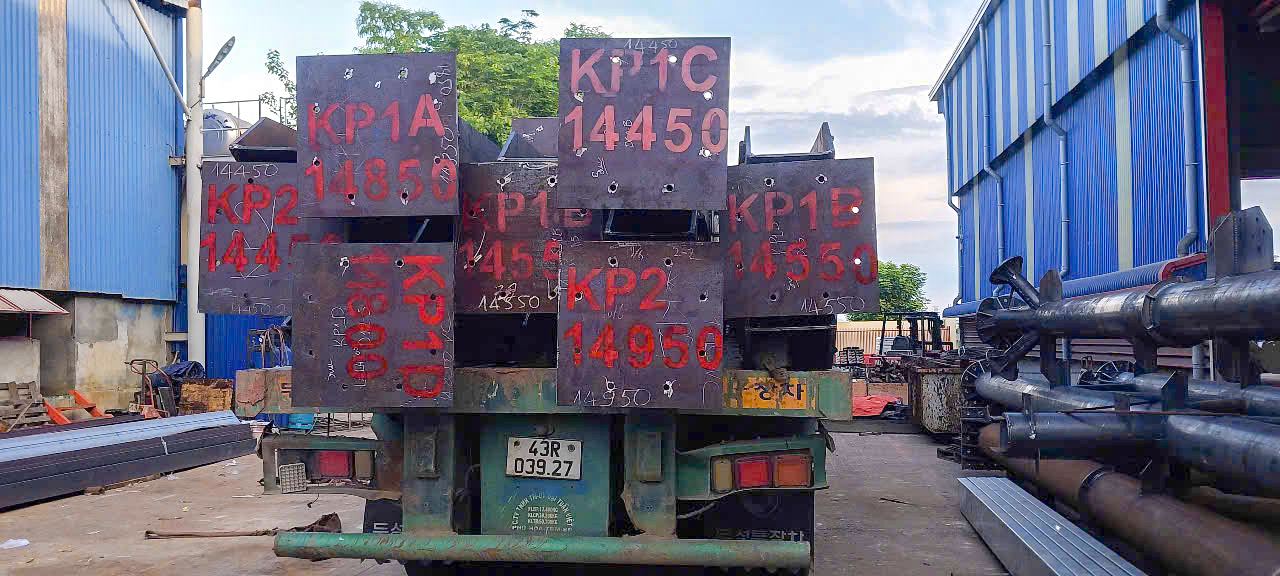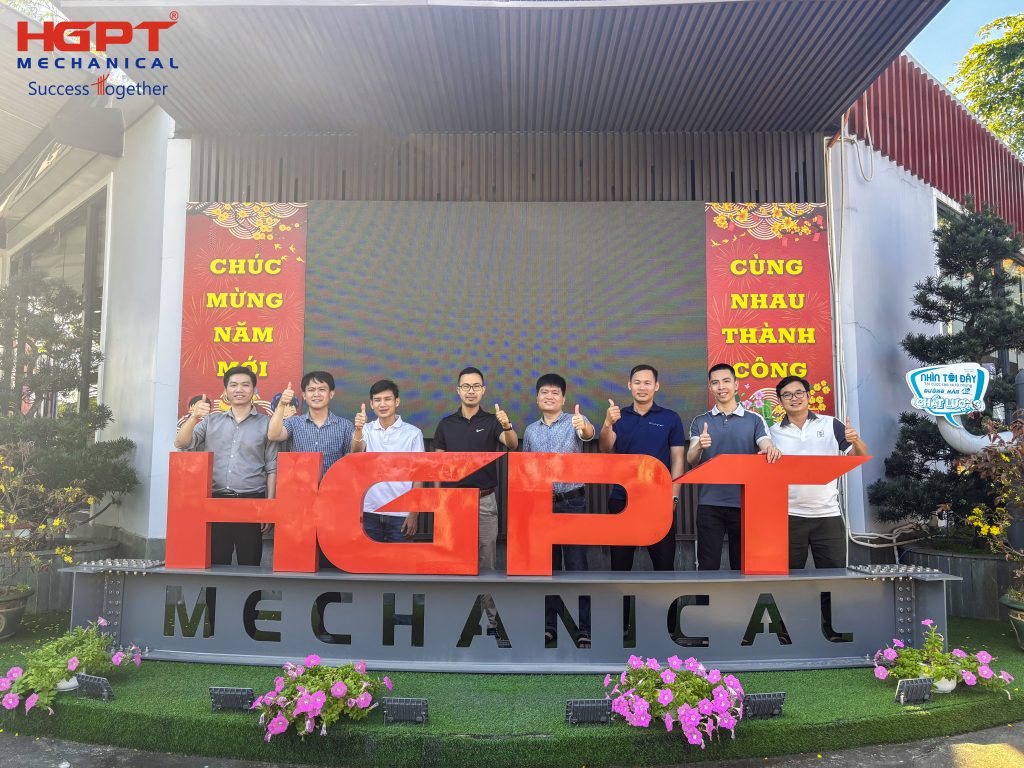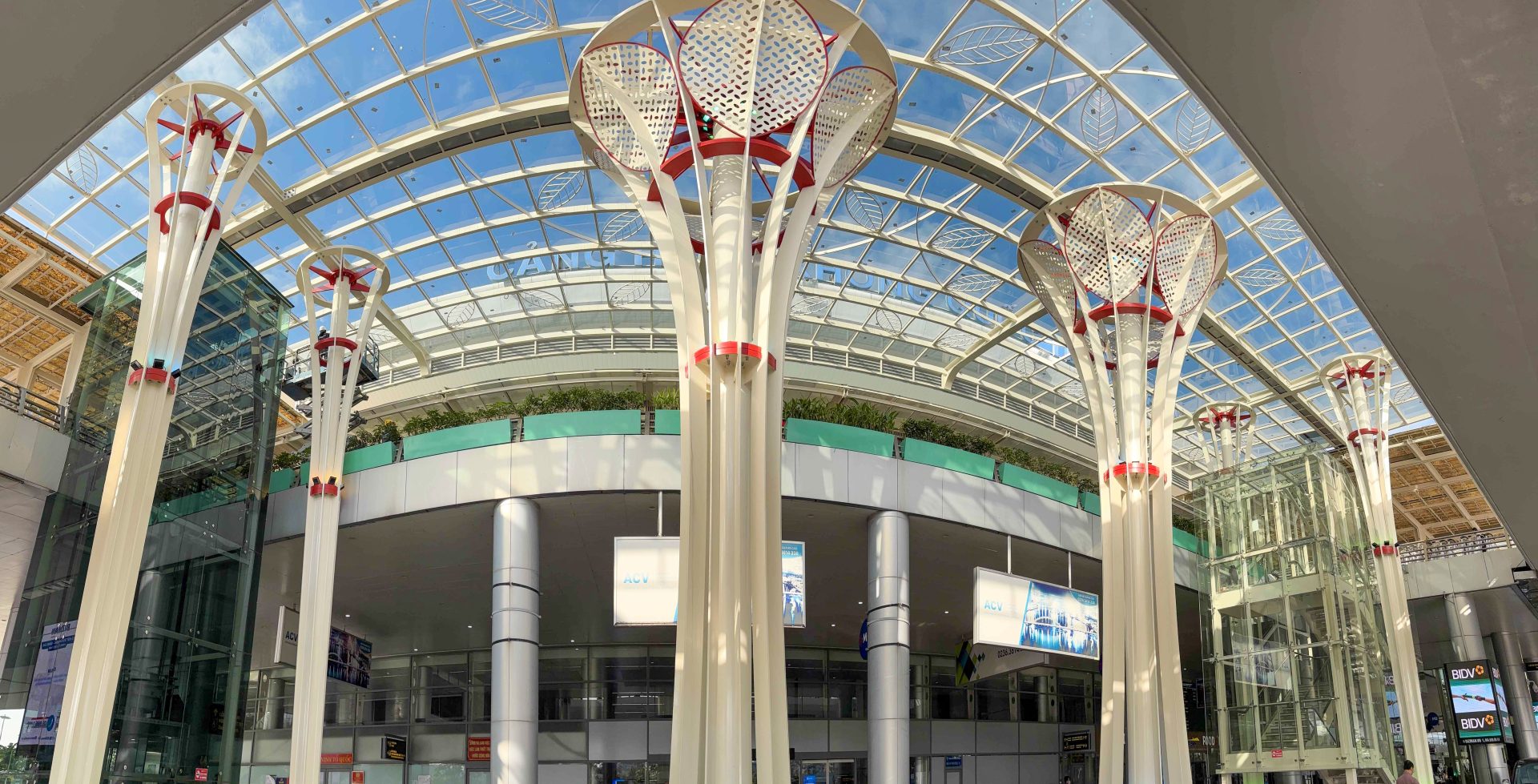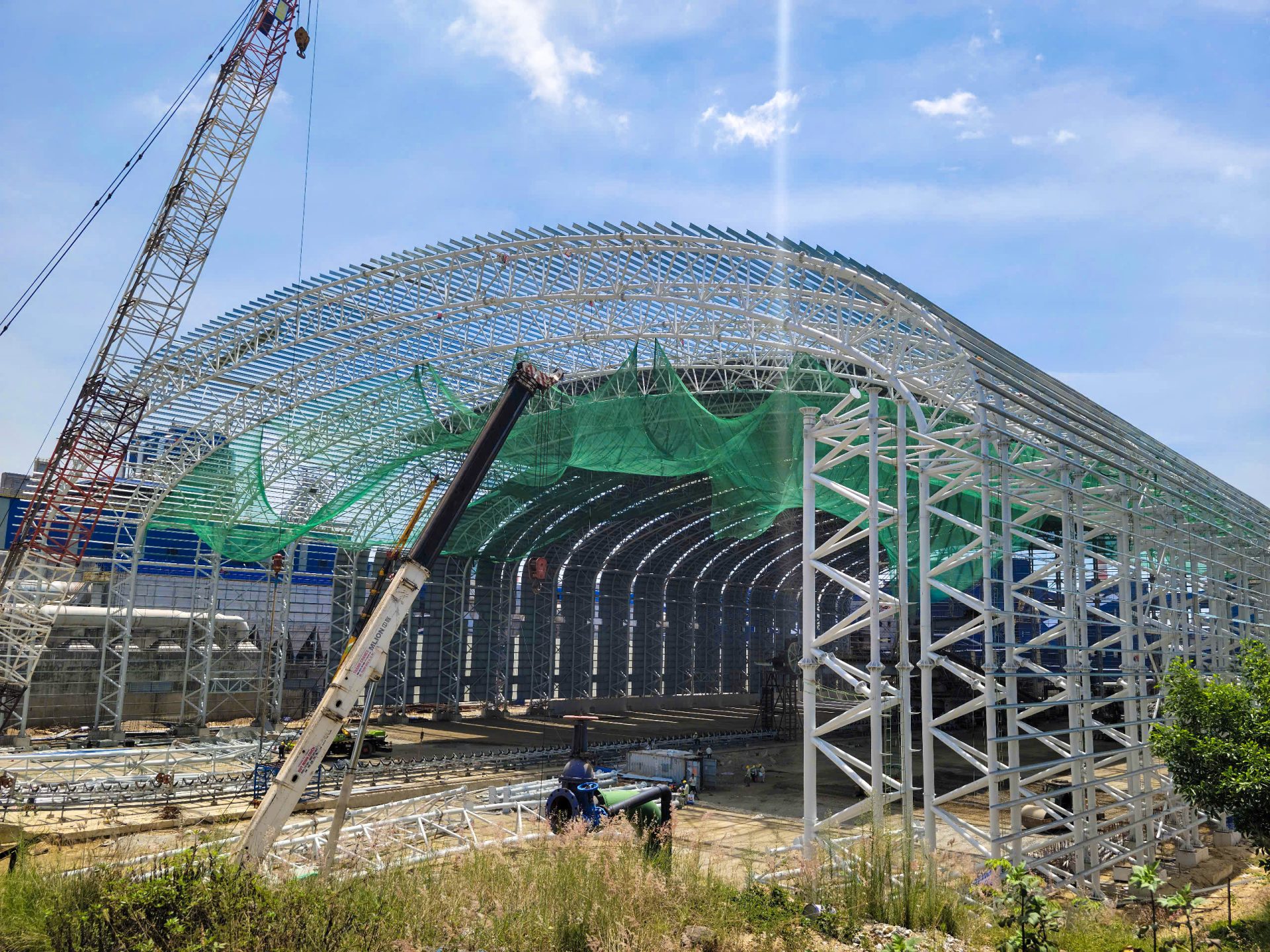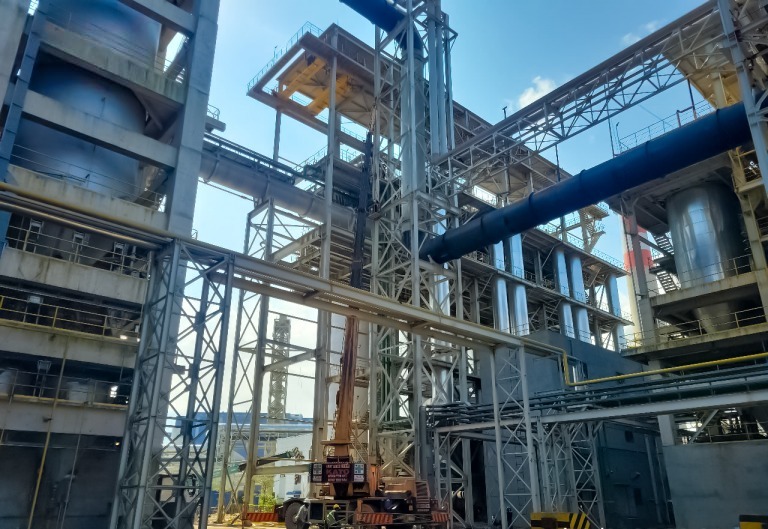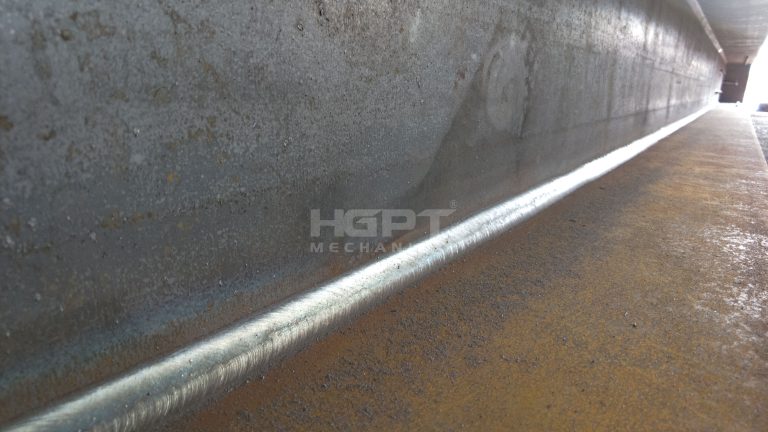21/10/2025
SHOT BLASTING – SURFACE PREPARATION OF STEEL STRUCTURES BEFORE PAINTING AT HGPT STEEL
This article provides an overview of the shot blasting process for steel structures at HGPT STEEL, explaining its advantages, methods, and the international standards applied in the company’s fabrication workflow.
I. Overview of Shot Blasting for Steel Structure Surface Preparation Before Painting
Shot blasting involves using high-pressure air to propel abrasive media (such as sand, steel grit, or shot) onto the surface of steel materials. This process removes impurities like rust, scale, and old coatings, while also improving surface roughness for better paint adhesion.
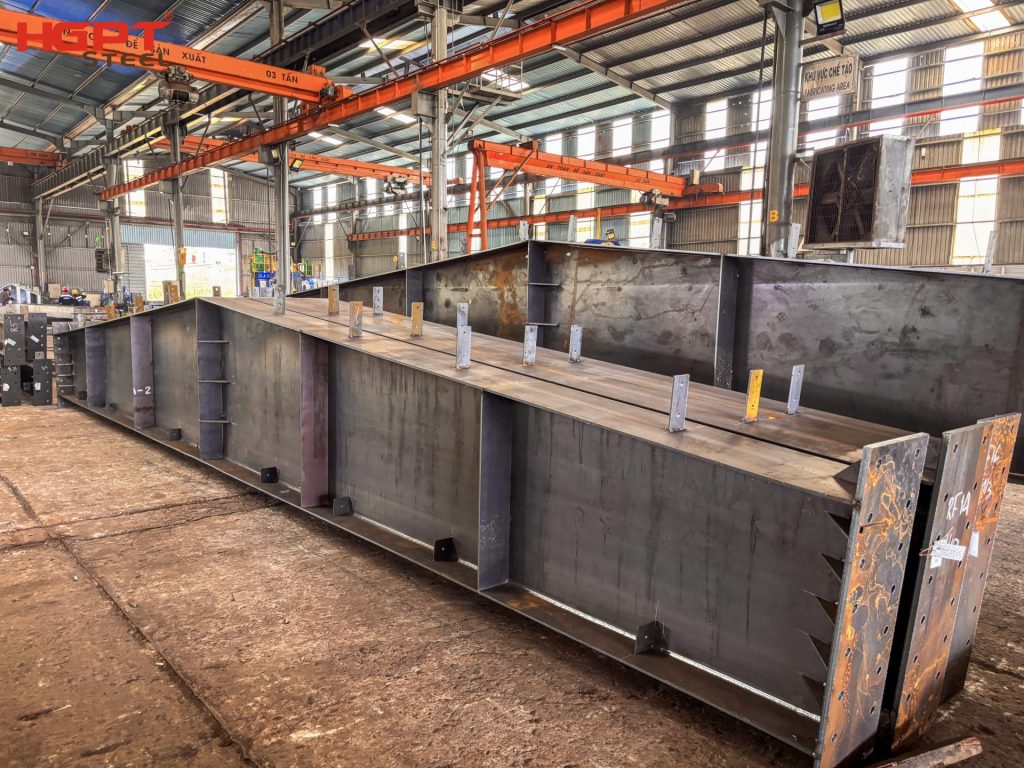
A well-blasted surface significantly enhances coating adhesion and long-term corrosion protection.
The shot blasting process for steel structures is not merely a cleaning procedure but an essential step with multiple important functions.
Firstly, surface cleaning enhances the durability and lifespan of steel structures by removing impurities and old paint residues. This helps prevent corrosion, minimize rust formation, and improve the structure’s overall load-bearing performance.
Secondly, a properly blasted surface provides an ideal foundation for coating adhesion, ensuring the primer and paint layers bond firmly and maintain color stability — protecting the steel surface from oxidation and corrosion.
Finally, the shot blasting process ensures that all steel structures meet technical and safety standards during construction, guaranteeing long-term quality and structural integrity for the entire project.
II. Industry Standards and References
The shot blasting process for steel structure fabrication and maintenance follows several internationally recognized industrial standards, including:
- SSPC – The Society for Protective Coatings (USA)
- NACE International – National Association of Corrosion Engineers (USA)
- ICRI – International Concrete Repair Institute
- ASTM International – American Society for Testing and Materials
These standards define the degree of surface cleanliness required for different coating systems, ensuring consistency, quality, and performance across all HGPT STEEL fabrication projects.
- SSPC-SP 7 / NACE 4, equivalent to ISO SA 1.0 – Brush-Off Cleaning (removal of loose rust, mill scale, and weakly adhering paint and contaminants).
- SSPC-SP 14 / NACE 8 – Industrial Cleaning, equivalent to ISO SA 2.0 (removal of loose rust, mill scale, and paint; tightly adhering contaminants may remain on up to 10% of the surface area).
- SSPC-SP 6 / NACE 3 – Commercial Blast Cleaning, equivalent to ISO SA 2. (removal of rust, mill scale, paint, and other contaminants so that at least two-thirds of the surface area is free of visible residues).
- SSPC-SP 10 / NACE 2 – Near-White Metal Blast Cleaning, equivalent to ISO SA 2.5 (removal of nearly all rust, mill scale, paint, and contaminants so that only light stains remain on no more than 5% of the surface area).
- SSPC-SP 5 / NACE 1 – White Metal Blast Cleaning, equivalent to ISO SA 3.0 (complete removal of all rust, mill scale, paint, and foreign matter to achieve a uniform metallic appearance).
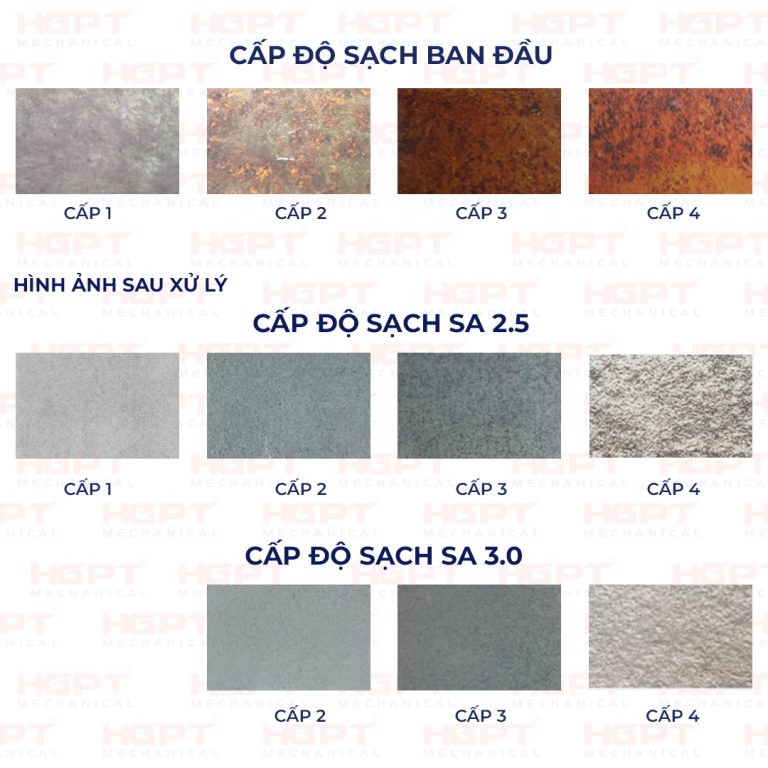
Surface Preparation Standard Applied at HGPT STEEL
At HGPT STEEL, the shot blasting process is typically performed to the SA 2.5 standard unless otherwise specified by the client. In practice, HGPT’s blasting equipment consistently achieves results exceeding this standard, ensuring superior surface quality. Although this level of preparation may cause higher material loss due to increased blasting intensity, it guarantees better paint adhesion and long-term coating performance on the steel surface.
III. Shot Blasting Procedure for Steel Structures at HGPT
1. Surface Cleaning Using Shot Blasting Method:
Step 1: Direct shot blasting is applied to the steel surface to achieve the required cleanliness level according to the specifications of each order.
Step 2: Use Compressed Air to Remove Dust and Contaminants Before Painting
At HGPT STEEL, we employ two types of shot blasting systems for cleaning steel structure surfaces prior to painting.
a. Automatic Shot Blasting System
Steel structures are placed on a conveyor system that moves them automatically through the blasting chamber.
Within the chamber, multiple high-speed turbines propel steel shots onto the surface, effectively removing rust, scale, dust, and unwanted coatings. The blasting intensity and speed can be adjusted using a variable frequency drive. After blasting, the steel surfaces are cleaned of residual dust using automatic brushes or air blow-off systems.
Key advantages of the automatic system include:
- High cleaning efficiency
- Environmentally friendly operation
- Uniform surface roughness
- Safe and convenient for operators
- Automatic Shot Blasting System
- Automatic Shot Blasting System
b. Semi-Automatic Shot Blasting Booth
This system is equipped with automatic shot recovery and dust filtration units, ensuring a clean and safe working environment. Thanks to its large chamber size and adjustable blasting angles, this booth allows precise cleaning of complex and heavy steel structures, meeting the same technical and surface quality standards as automatic systems.
- The shot blasting booths at HGPT STEEL
- The shot blasting booths at HGPT STEEL
2. Surface Treatment After Shot Blasting and Before Painting
- For surfaces that do not meet the required cleanliness level: Re-blast the entire surface or specific areas that fail to meet the standard.
- For surfaces with flash rust: Use a steel brush or suitable cleaning solution to remove rust before painting.
- For surfaces contaminated with dust or dirt: Use compressed air or clean cloths to remove contaminants prior to painting.
Note: After shot blasting, the cleaned surface can begin to re-oxidize (rust) very quickly. Therefore, painting should be carried out as soon as possible, ideally within three hours, to prevent new rust formation and ensure optimal coating adhesion.
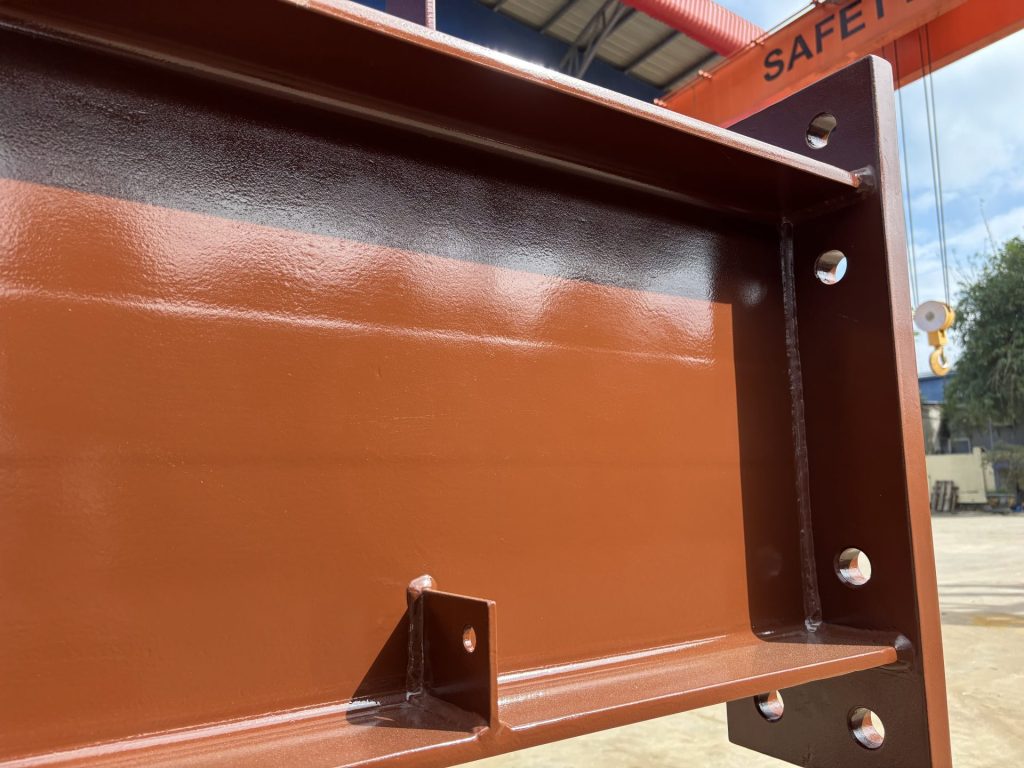
Proper surface preparation ensures excellent paint adhesion and enhances the durability and longevity of the entire structure.
These post-blasting steps implemented by HGPT STEEL guarantee that all steel surfaces are thoroughly cleaned and properly treated before painting. This ensures long-term coating performance and helps clients minimize risks and potential issues during and after construction.
Contact information:
HA GIANG PHUOC TUONG MECHANICAL JSC (HGPT Steel)
Address: Street No. 8, Hoa Cam Industrial Park, Hoa Tho Tay Ward, Cam Le District, Da Nang City, Vietnam
– Hotline: 0949.386.113
– Mail: info@hgpt.vn – Website: https://hgptsteel.com/
– Fanpage: https://www.facebook.com/HGPTMechanicalJSC
Subscribe to HGPT STEEL Newsletter
Get the latest updates on projects, products, and company activities from HGPT STEEL. Take a look
Related news
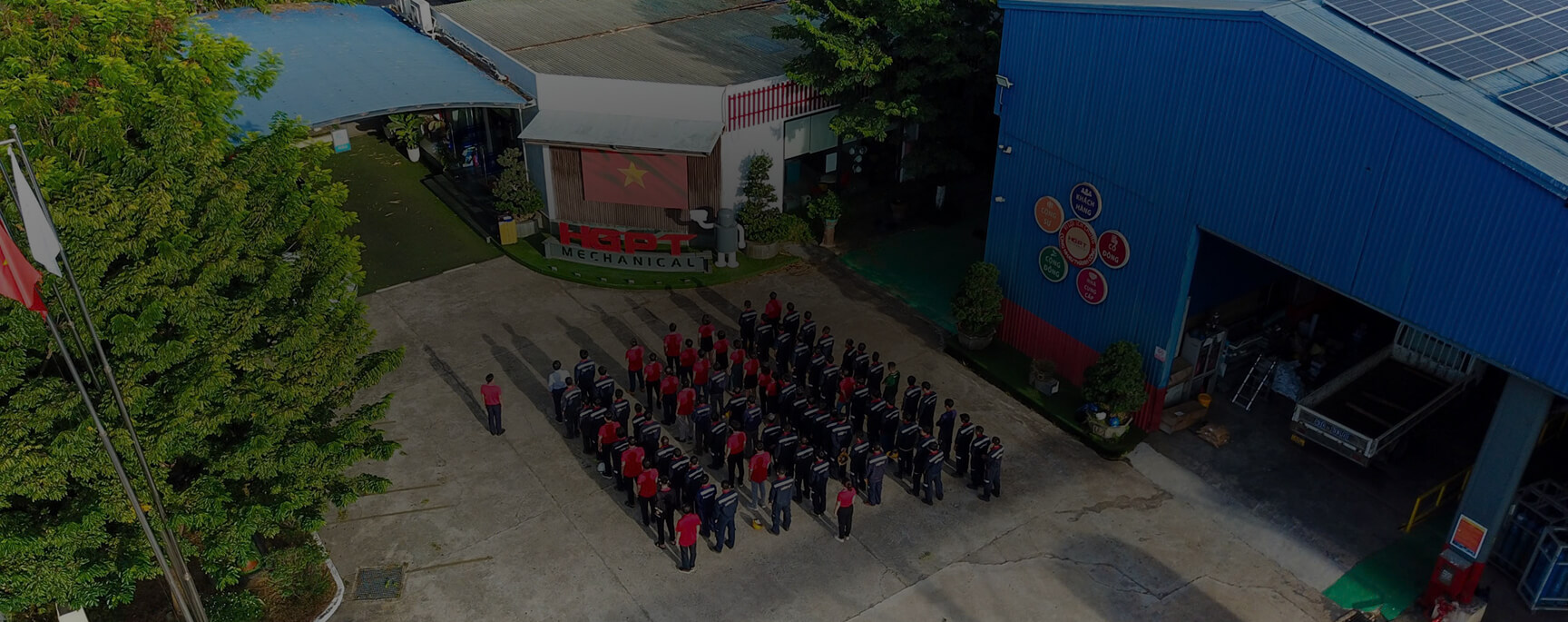
CONTACT US NOW
We are committed to partnering with businesses, contractors, and investors to deliver projects of quality – sustainability – and on schedule.

